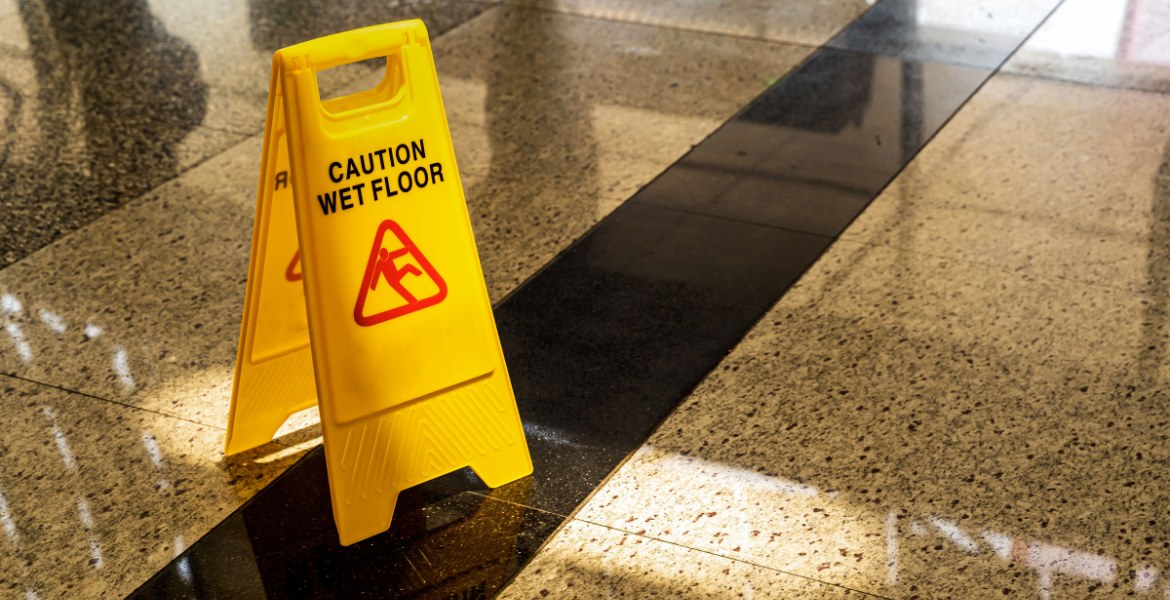
According to research by the HSE (Health and Safety Executive), slips and trips are the single most common cause of non-fatal injuries in the UK. In 2018/19 29% of all non-fatal injuries were caused by a slip trip or fall on the level.
‘The Health and Safety at Work Act 1974 requires employers to ensure the health and safety of all employees, and anyone affected by their work, so far as is reasonably practicable, which means balancing the level of risk against the measures needed to control the risk in terms of money, time or trouble,’ cites the HSE. ‘This includes taking steps to control slip and trip risks.’
It is a legal requirement under the 1992 Workplace Health, Safety and Welfare Regulations (Regulation 12) that every floor in a workplace and the surface of every traffic route in a workplace shall be of a construction such that the floor or surface of the traffic route is suitable for the purpose for which it is used.
HSE research has shown that most slips occur when floors become wet or contaminated. People are unlikely to slip on a clean, dry floor. Clean, dry, and uncontaminated surfaces are usually safe and slips on these are rare.
The HSE point to a number of factors that can have an impact on pedestrian slip risk and need to be considered within an overall risk assessment. Examples of these include (but are not necessarily limited to): drainage and expected floor contaminants, user behaviour, likely cleaning regimes, type of footwear used, the environment in the usage area and the type of use the floor is subjected to by pedestrians.
The HSE also offer advice on Risk Assessment and provide examples of practical steps that can be taken to help prevent slips. These include:
Cleaning is also a key factor in keeping smooth floors safe and, where floors with enhanced slip-resistant properties are used, ensuring that the slip-resistant properties are maintained in service. When cleaning is carried out effectively, it can make the difference between a floor being an unacceptably high or acceptably low slip risk.
Slip resistance is just one, albeit important, factor in the selection and specification of floor coverings and should not therefore be seen as the sole, one-dimensional solution in managing slip risk. Prevention, reduction, and control of contamination are also important factors in keeping floors safe.
The selection and specification of suitable flooring for any application should include a risk assessment and should normally involve the manufacturer.
Flooring with enhanced slip resistance (safety flooring) and those with applied specialised slip-resistant coatings are typically used in both commercial and residential areas where a risk assessment has identified that there is a high risk of contaminants or spillages getting onto the floor and the slip risk presented by these contaminants cannot be mitigated or controlled by other means.
Most safety flooring products are designed with various particles and aggregates incorporated within the construction to increase the friction between the sole of the foot and floor when in wet conditions and thereby reduce the slip potential. Safety flooring products offer slip resistance that should be sustainable for the guaranteed life of the product. Particles being incorporated through the performance layer will reduce the risk of slipping on a floor for this period, should it become contaminated.
When considering safety floors, it is important that the manufacturer’s guidance is sought in selecting a grade of flooring that is appropriate for the area of use and suitable for the type of contaminants likely to be present.
Further information on slip resistance and safety flooring can be found in the CFA Guide to Contract Flooring.